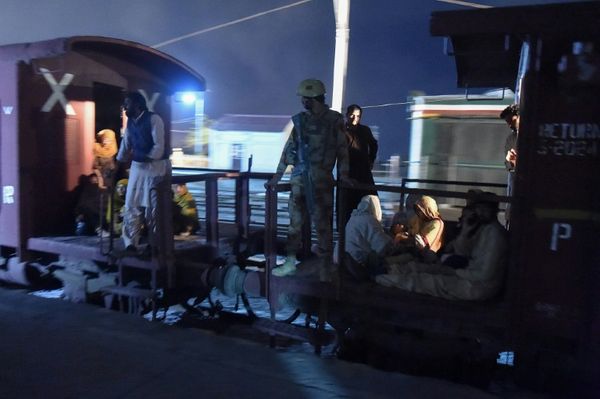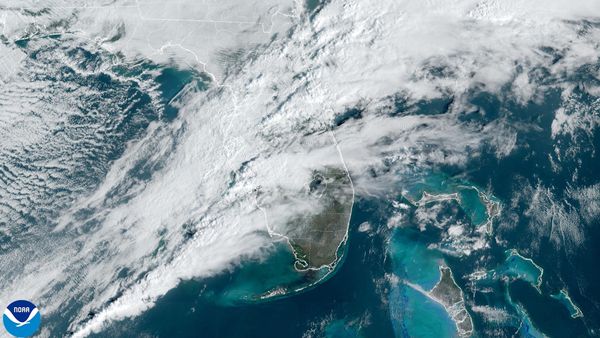
Sri Lanka is facing its worst financial crisis in more than 70 years. Food prices on the island nation rose by a record 30 percent in March alone. Here’s how much basic necessities now cost in the country of 22 million people.
The cost of living in the tourism-reliant country has become unbearable for many. Thousands have recently taken to the streets in massive protests across the country demanding the president’s resignation.
There is a great deal of dissatisfaction with the powerful Rajapaksa family, whose members hold several top positions in government, including President Gotabaya Rajapaksa and Prime Minister Mahinda Rajapaksa.
In the face of public anger, the cabinet of ministers resigned in full on Monday, and a new finance minister was appointed. On Tuesday, he too resigned.
The parliament said it would debate the ongoing crisis until Thursday. Protesters surrounded the parliament complex on Tuesday, demanding solutions for the economic crisis.
Sri Lanka was already grappling with Asia’s highest rate of inflation because of lockdowns during the COVID pandemic and the diminished tourism industry before Russia’s war against Ukraine added to its woes.
A hard-currency squeeze saw food and fuel shortages, with people queuing for kilometres outside petrol stations and power cuts as long as seven hours.
Mounting foreign debt
Cash-strapped Sri Lanka has taken short-term loans from India, China and Bangladesh. In June 2021, Bangladesh loaned Sri Lanka $200m and in December it renewed the credit facility.
In January this year, Sri Lanka appealed to China to reschedule its debt. In February, it borrowed $500m from India to buy oil. On March 18, India gave Sri Lanka a $1bn line of credit to pay for essentials such as food and medicine.
As of February, Sri Lanka only had $2.31bn in its foreign exchange reserves, according to its central bank. With debt payments of about $7bn due in 2022 – including $1bn in international sovereign bonds (ISB) maturing in July – Sri Lanka may find itself with no usable reserves.
At $12.55bn, ISBs make up the largest share of Sri Lanka’s foreign debt, with the Asian Development Bank, Japan and China among the major lenders.
In a review of the country’s economy last month, the International Monetary Fund (IMF) said public debt has hit “unsustainable levels” and foreign exchange reserves are insufficient for near-term debt payments.
Rising food prices
Sri Lanka’s food inflation in March was 30.2 percent, which means the average price of food cost 30 percent more compared to the year before, a record high. In comparison, food inflation was -1.4 percent in March of 2019.
Essentials, even locally produced ones, have become unaffordable for many. The price of white rice, a common Sri Lankan staple, increased by 93 percent since 2019. Chicken and lentils have gone up by at least 55 and 117 percent, respectively, since 2019.
Nisha Shari, a self-employed woman with a disability who lives in the city of Kandy, said she is finding it extremely difficult to make ends meet.
“Since I have mobility issues I cannot use public transport, so I generally use a three-wheeler [automobile] to get around. That costs me 1,000 rupees [$3.25] from home to town since the fuel price rise,” she said.
“I need adult diapers and other health accessories but some of these are not available to buy now. It’s difficult to afford even a nourishing meal with this situation.”
The crisis has also pushed the country’s free healthcare system to the brink. About 85 percent of its pharmaceuticals are imported, according to the International Trade Administration.
The prolonged blackouts mean many doctors are forced to treat patients by flashlight. Other equipment such as catheters, anaesthetics, and gloves are also running low.
Fuel and cooking oil prices
In March, the state-owned Ceylon Petroleum Corporation raised the price of a litre of petrol from 137 in 2021 to 254 rupees ($0.45 to $0.85; or from $2.04 a gallon in 2021 to $3.86). The price of diesel also increased from 104 rupees a litre the year before to 176 rupees ($0.34 to $0.58; or from $1.54 a gallon in 2021 to $2.63).
A standard household 12.5kg cylinder of cooking gas increased from 1,493 rupees ($4.9) in 2021 to 2,750 rupees ($9) in 2022. Many Sri Lankans are switching to firewood and kerosene alternatives as cooking gas is now too expensive to afford.
“It is a struggle even to prepare the food one buys at a high price. All businesses, including micro-enterprises which depend on a reliable supply of electricity, are in difficulty,” economist Rohan Samarajiva told Al Jazeera.
“Economic reforms will be painful. Therefore implementing a targeted social safety net programme to protect the poor from the rising cost of living is vital,” he added.
Weak currency and record inflation
The purchasing power of the Sri Lankan rupee has eroded immensely. The central bank has expanded the broad money supply by 40 percent over the past two years, eroding its value. The rupee lost more momentum last month when the government steeply devalued it ahead of talks on debt restructuring with the IMF.
On the official exchange, 310 rupees buy one US dollar, but on the black market the price is upwards of 350.
In March, Sri Lanka’s inflation rate climbed to 18.7 percent, up from 15.1 percent in February – its highest level since October 2008.
Inflation in Sri Lanka had not entered double-digit territory since 2008. Food inflation had never exceeded 15 percent until now.
The COVID-19 pandemic had already stressed many households with stagnant or, in many cases, severely depleted incomes.
The huge increase in prices can be attributed to the government’s October 2021 decision to remove price controls, which suppressed inflation for many years.
On top of that, import bans in March 2020, a failed organic agriculture policy decision, as well as global commodity price increases, have contributed to inflationary pressure.
Sri Lanka’s controversial ex-central bank chief, Ajith Nivard Cabraal, stepped down three days ago along with a cabinet of ministers and is now succeeded by the respected banker Nandalal Weerasinghe.
There is hope now that monetary authority will return to orthodox policy-making, which is likely to increase the central bank’s credibility both domestically and internationally.
The government is set to commence discussions with the IMF this week, but without a finance minister in place, the outlook remains unclear.
Calls from the public for the president and prime minister to step down remain unheeded and protests grow tenser.
Sri Lanka heads into the Sinhala and Tamil New Year festivities next week, but with skyrocketing prices, a shortage in essentials and no solutions in place, the economic and political situation could worsen.







